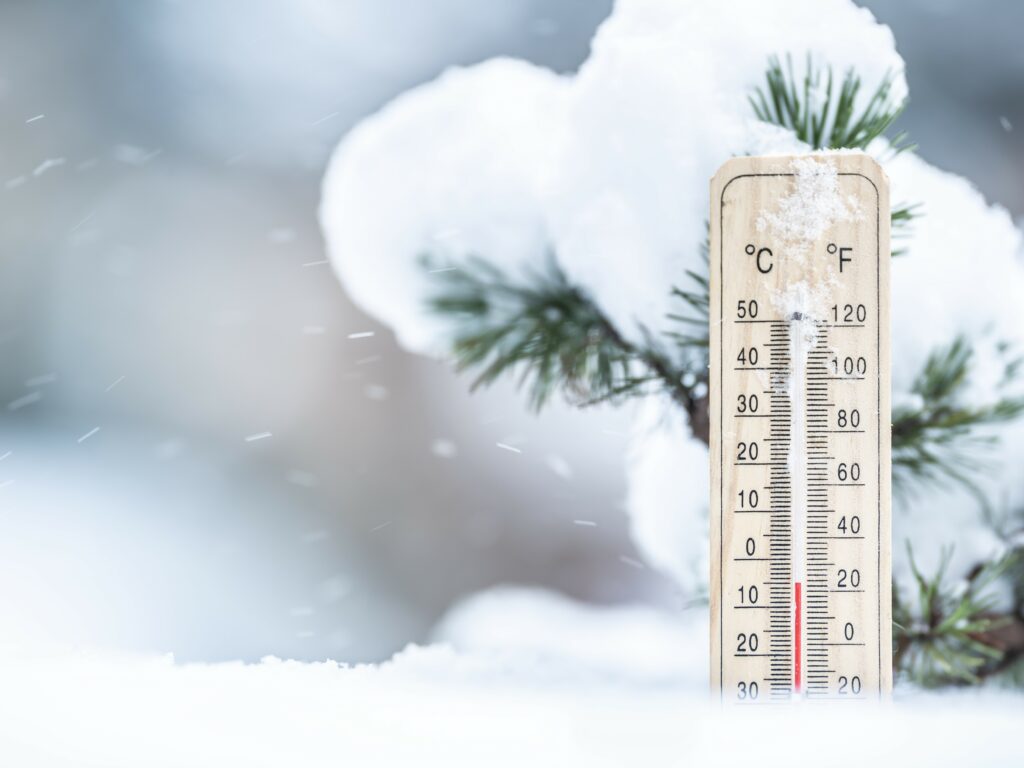The UFCW’s Occupational Safety and Health (OSH) Office has guidelines to help locals protect our members from the risk of cold weather hazards this winter.

Cold stress begins to occur when our superficial body temperature begins to drop, eventually followed by our core temperature. As our body struggles to maintain its natural temperatures, various cold-related illnesses and injuries begin to rear their ugly heads, as follows:
• Trench Foot
Trench foot is a foot injury that can be caused by long term exposure to both cold and wet conditions, as wet conditions cause feet to lose heat up to 25 times faster than dry heat. When one’s feet are constantly exposed to wet conditions, trench foot can become a threat to our members in as high as 60 degree Fahrenheit weather. Symptoms of trench foot include numbness, tingling, swelling, blisters, and bleeding of the feet. If you are experiencing these symptoms, it is important to receive medical assistance quickly and remove wet shoes and socks. After the removal of those clothing articles, dry the feet and keep them elevated to reduce tissue damage and swelling.
• Frostbite
Frostbite is an injury caused by the freezing of skin tissue and develops into gray/white patches on the affected extremities, most commonly fingers, toes, noses, and earlobes. The main symptoms include color change, as well as tingling, aching, loss of feeling, and blisters in the affected areas. Frostbite is a severe condition and can lead to permanent nerve damage to the body and may necessitate amputation. If you believe that you are suffering from frostbite, getting into a warm room is your top priority. Protect the affected areas by wrapping them loosely in dry cloth. It is important that as you wait to receive medical attention, you DO NOT rub, massage, or try to rewarm the affected areas, as doing so may lead to more irreversible tissue damage.
• Hypothermia
Under normal circumstances, our bodies maintain an internal body temperature of 98.6 degrees Fahrenheit, with a variation of less than one degree. When we experience prolonged exposure to temperatures that do not allow our bodies to heat itself faster, the body uses up its stored energy. Eventually the body’s core temperature dips under 95 degrees Fahrenheit, and at this point the victim begins to shiver uncontrollably, lose coordination, become confused, and drift in and out of consciousness. It is important to note that like trench foot, hypothermia can be impacted by wet conditions. With the presence of moisture, hypothermia can occur at temperatures over 40 degrees Fahrenheit. Once these symptoms are present, 911 should be called, and the victim should be moved to a warm room where their wet clothing is replaced with dry clothing and layers of blankets and vapor barriers. Warm drinks are helpful, as well as placing warm bottles or hot packs in armpits, sides of chests, and groins.
• Chilblains
Chilblains are a painful inflammation of small blood vessels in the skin caused by repeated exposure to temperatures just above freezing to as high as 60 degrees Fahrenheit. Symptoms include redness, itching, blistering, inflammation, and in severe cases, ulceration. It is important to avoid scratching the affected areas and keep all blisters and ulcers clean and covered.
There are some straightforward ways to prevent these illnesses and injuries, and the following are just a few of the important things to keep in mind.
Wearing Proper Protection
It is crucial that we wear the appropriate attire to work every day, including shirts, pants, jackets, hats, shoes, and gloves. Our clothing choices should reflect our environment. If we are experiencing a constant change in temperature, layers should be worn. If we are experiencing extreme cold, insulated clothing should be worn, and if we are experiencing wet conditions, waterproof clothing should be worn. Wearing appropriate attire should not replace personal protective equipment (PPE); rather it should be used in addition to it.
Regular Breaks That Include Hydration
Most people believe that dehydration is only relevant when working in hot conditions, but this is not true. Your body utilizes hydration to regulate its internal temperature and decrease the risk of receiving a cold-related injury or illness. This, mixed with regular breaks that allow the body to recover from harsh environments, will allow a worker to not only survive the workday, but do so with comfort.
Outfit the Workplace
It is essential that when feasible, our workplace infrastructure includes heating systems and insulation, especially in break areas where workers must reset their internal and external body temperatures. Proper lighting is another important infrastructure factor that is overlooked during the winter months. When it is necessary to work outside under restricted daylight hours, lights are necessary to increase visibility and reduce the risk of accidents on the job.
Train the Workers
Empowering our members is a top priority when it comes to safety and health, and there is nothing more empowering than being trained about how to deal with the signs and symptoms of cold-related illnesses. These training sessions should cover early symptoms and warning signs, proper PPE and prevention strategies, and the importance of swift medical attention.
For more information about cold weather hazards and protections, please contact Roy McAllister, the director of the OSH Office, at rmcallister@ufcw.org.
